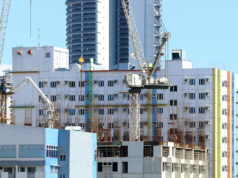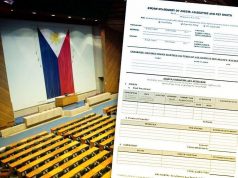Green buildings represent $24.7-trillion investment opportunity — IFC report
By Cathy Rose A. Garcia, Associate Editor
GREEN BUILDINGS offer a $24.7-trillion investment opportunity in emerging markets, including the Philippines, according to a report by the International Finance Corp. (IFC).
“The estimated $24.7-trillion investment potential in green buildings between 2018 and 2030 in emerging market cities is due to the sharp increase in building construction expected over the next few decades and the opportunity to ensure these are built green. This amount reflects the investment opportunity created by fully achieving explicit and implicit urban green buildings-related policies and targets set by local and national governments in emerging markets until 2030,” IFC said in its report titled “Green Buildings: A Finance and Policy Blueprint for Emerging Markets.”
For East Asia Pacific region, IFC said the investment potential in green buildings is estimated at $16 trillion.
The biggest investment opportunity in emerging markets is in residential buildings, estimated at $15.7 trillion until 2030, followed by commercial buildings at $9 trillion.
“The investment opportunity in the green residential sector is driven by the growing demand for housing, governments’ concerted efforts to meet housing demand for its citizens, and underinvestment in energy efficiency measures in the sector,” the report said.
IFC noted that residential buildings currently account for nearly 75% of energy use by buildings, but get just half of energy efficiency investment.
Demand for commercial green buildings is expected to continue to rise, fueled by increased competition for tenants and stricter regulations.
According to the IFC, green buildings are those: “certified as green under one of the internationally recognized certification standards or an approved national standard; and at least 20% more energy efficient than a baseline building without energy-efficient design.” The buildings should also be able to report impact metrics, such as energy and water savings.
“Studies and evidence across several markets suggest that to build green could range from savings of 0.5-12% in additional costs. Green buildings are more efficient than traditional buildings and can lower operating costs, increase revenues, and reduce exposure to the physical and transition risks presented by climate change. These factors can increase the valuation of green buildings, making them stronger credit assets and better collateral,” IFC said.
Developers can also command higher sale premiums up to 31% more for green buildings, IFC said. Green buildings also have higher occupancy rates and can generate higher rental income, while operational costs are up to 37% lower than traditional buildings.
However, IFC cited several challenges to the growth of green construction, such as low technical capacity and difficulty in implementing consistent standards and requirements.
But despite this, the sister organization of the World Bank said established financing models and readily available, cost-efficient building technology will help drive the growth of the green construction sector.
“With rapid urbanization, a growing population, and rising income, Asia needs a more sustainable building solution to address the region’s pressing infrastructure requirements and climate change challenges. This report is timely and shows how green buildings can play a pivotal role in spurring low-carbon economic growth,” Nena Stoiljkovic, vice-president for Asia and the Pacific at IFC, said.
“In this context, governments — national, subnational, and local — can create the right conditions for the growth of the green buildings market and provide clarity and policy certainty to the private sector through regulations.”
In the Philippines, Arthaland Corp. this year became the first company to get an EDGE (Excellence in Design for Greater Efficiencies) Zero Carbon certification for its flagship project in Bonifacio Global City, Taguig. This made the ArthaLand Century Pacific Tower (ACPT) triple certified, as it also has LEED Platinum and BERDE 5-star certifications.
EDGE is IFC’s own green building certification system for emerging markets. Zero Carbon status is given to projects that have “offset 100% of their operational emissions and have reached at least 40% energy savings onsite compared to a base case building.”
IFC, a member of the World Bank Group, has invested $5.5 billion in green buildings in nearly a decade.



